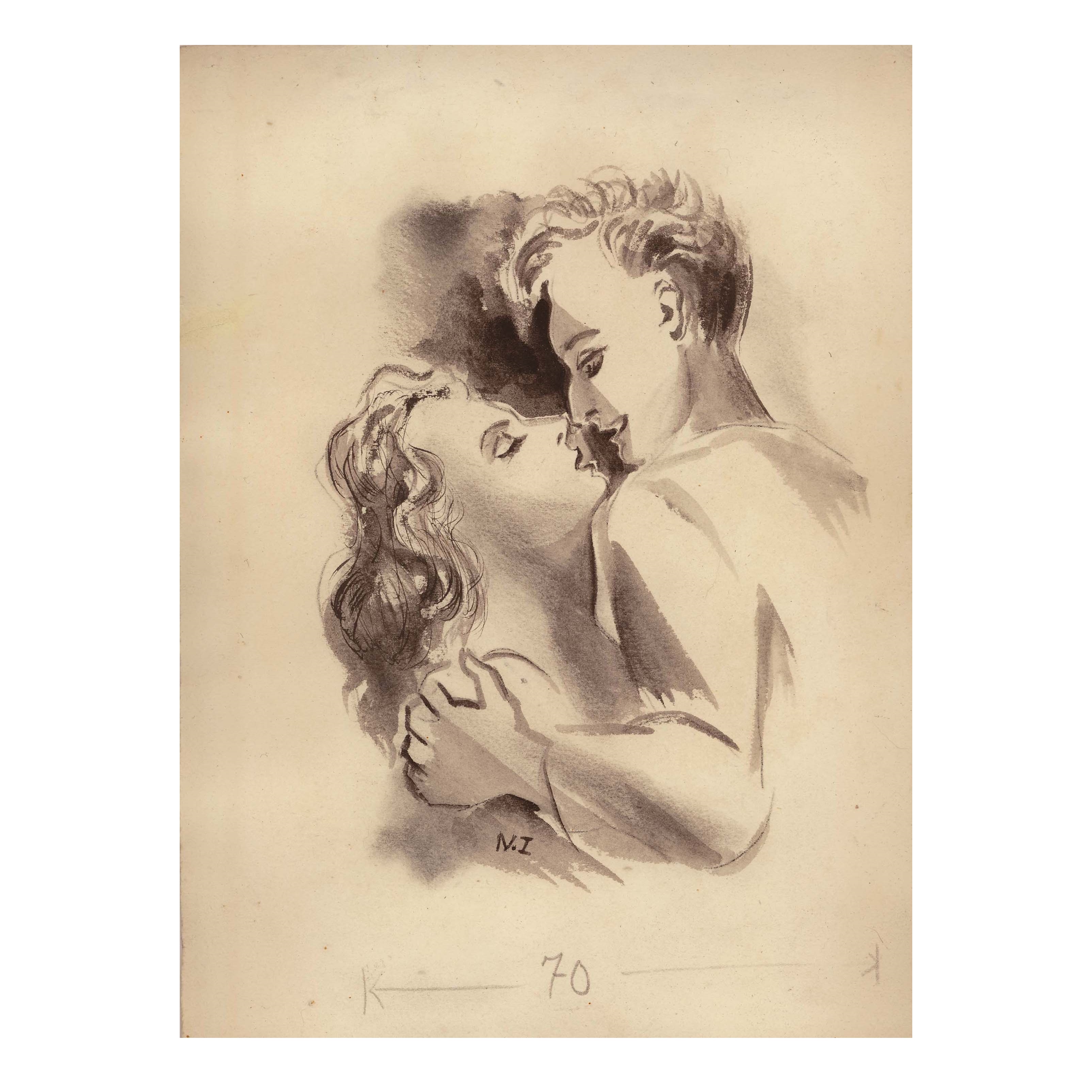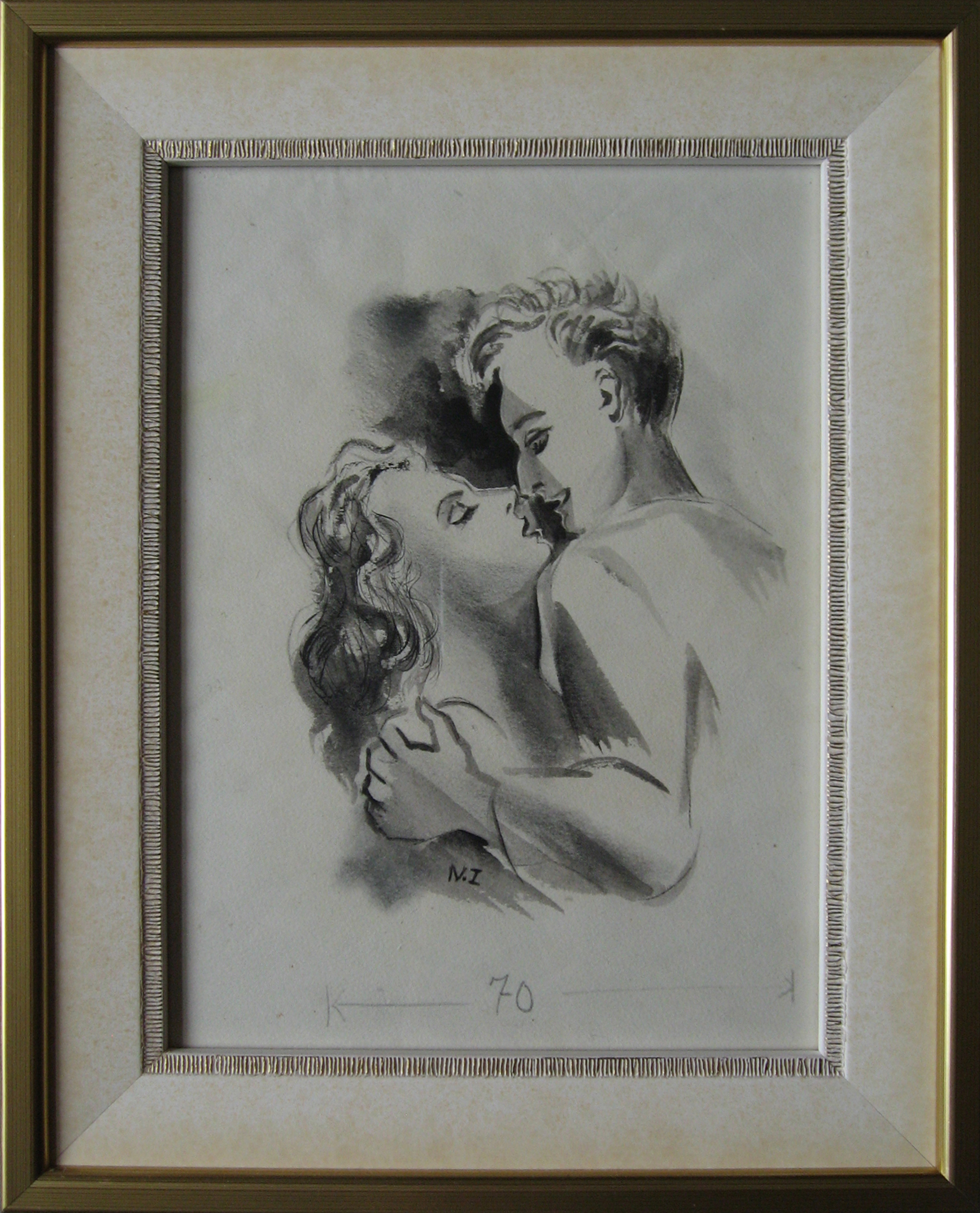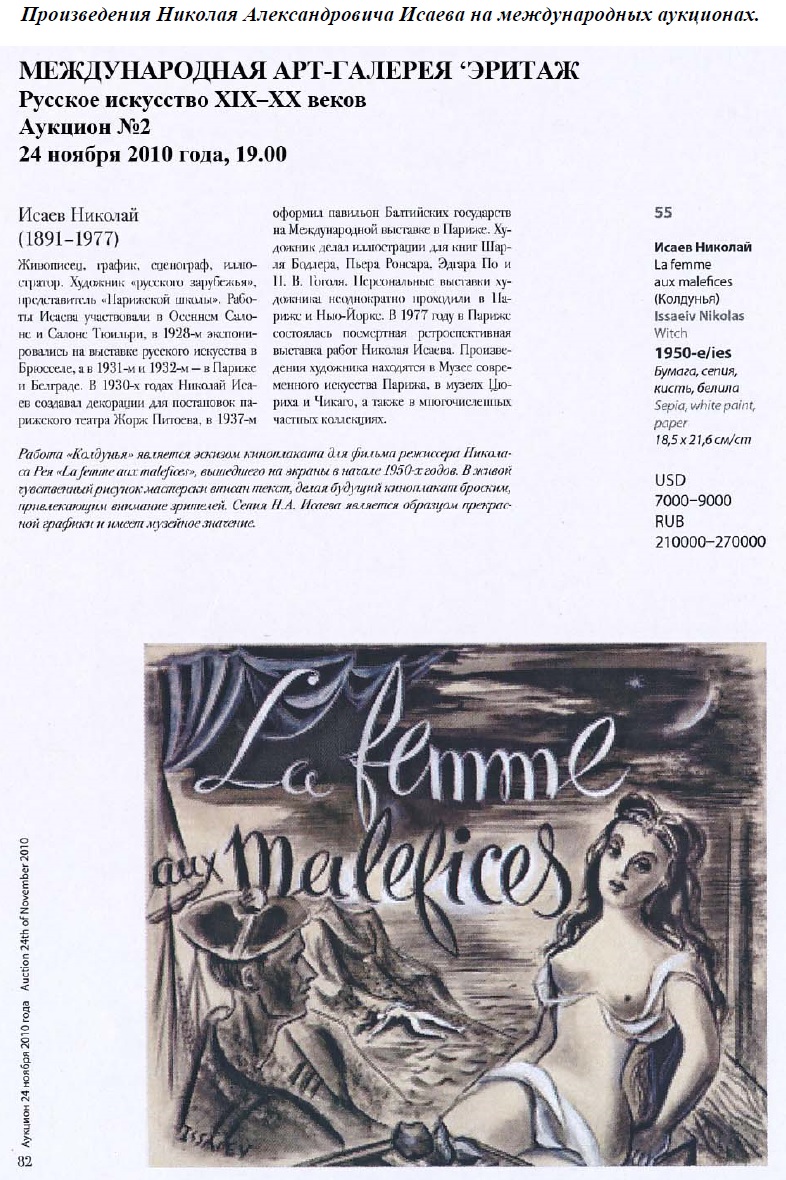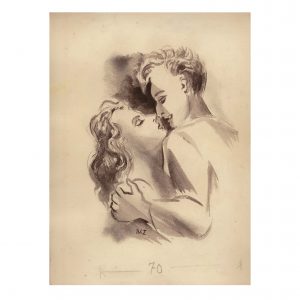NikolaI Aleksandrovich Isaev
1891 (near Odessa) — 1977 (Ivry, near Paris)
Painter, graphic artist, scene designer, illustrator.
In the early 1900s he studied in art schools in Odessa and Kharkiv, in 1912 he moved to Saint Petersburg. During World War I Isaev entered the military academy and in 1916 he participated in combat action at the Galician Front and was wounded.
In 1919 Isaev emigrated to the Kingdom of Serbs, Croats and Slovenes. In 1920-1924 he worked as scene designer at the National Theatre in Belgrade where he created costume sketches, theatricals and copied Byzantine frescoes. That was also when the artist held his first personal exhibition.
In 1925 Isaev moved to Paris. In 1925-1926 he attended classes at V.I.Shukhaev and A.E.Yakovlev workshop. In 1926 he held a day-long personal exhibition. Later he attended the Ranson Academy and was under strong influence of the cubist Roger Bissière. In 1938 he spent some time working in Bissière’s studio. Just like many other Russian emigrant artists he created theatricals, worked as set designer (G. Pitoev theatre). He decorated the pavilion of the Baltic countries at the 1937 Paris International Exposition. Some of his Russian artist friends included D.V.Merinov and G.Lebedev.
Isaev took active part in the Paris salons: the Autumn Salon, the Salon des Indépendants, the Salon des Surindépendants, the Salon Comparaisons and the Salon des Tuileries. He also participated in exhibitions of Russian art in Brussels (1928), Paris (Alice Manteau, 1931; d’Alignan, 1931; La Renaissance, 1932) and Prague (1935) and in the exhibitions of the Circle group in Belgrade (1931). Isaev held personal exhibitions at the Paris Lesnik (1928), AtelierMme Margaret Train Embre (1930), La Boёtie (1930) galleries. He donated artworks for charity in a benefit for the Russian youth (1928), the members of the Union of former figures of the Russian judicial institution (1935).
In 1940-1945 Isaev lived in the south of France, in Agen. He and his wife hid partisans and French officers in their house. In 1971 he was awarded with the Cross of the resistance volunteer combatant.
After the war Isaev travelled in Europe a lot visiting Switzerland, Italy and Spain. On his journeys the artist created numerous landscapes, frescoes and icons for the Uniat churches in Marseille and Strasbourg. His manner at this time changed prominently: the colours became brighter and the art was more figurative. Isaev took part in the exhibitions of Russian art organized by the France-USSR committee and the Union of the Russian Patriots. He illustrated several books including The Flowers of Evil by Charles Baudelaire, Love Sonnets by Pierre De Ronsard, The New Extraordinary Stories by Edgar Allen Poe, The Nose by Nikolay Gogol (it was exhibited at the Paul Valéry club in 1954). Isaev collaborated with C’est Paris magazine.
Isaev’s later artworks show his returned interest to cubism.
In 1965 the artist presented his works at a group exhibition of European art in New-York. He participated in the Russian Artists of the Paris School(1961) and The Russian Glance (1974) exhibitions.
In 1976 a posthumous exhibition of the artist took place in Paris. In 1991, after 15 years of storage, his artistic heritage (more than 200 canvases, several hundreds drawings, watercolours, gouache and pastel paintings and illustrations) was sold at the Drouot auction.
Isaev’s artworks are included in the collections of museums in Belgrade, Zurich, Chicago, and of the Museum of Modern Art in Paris.




